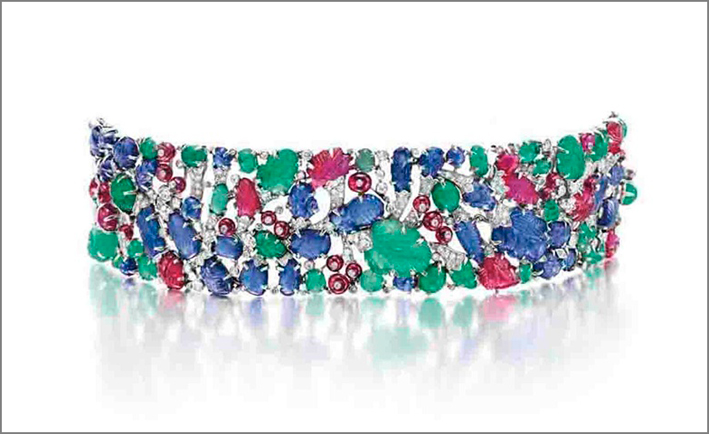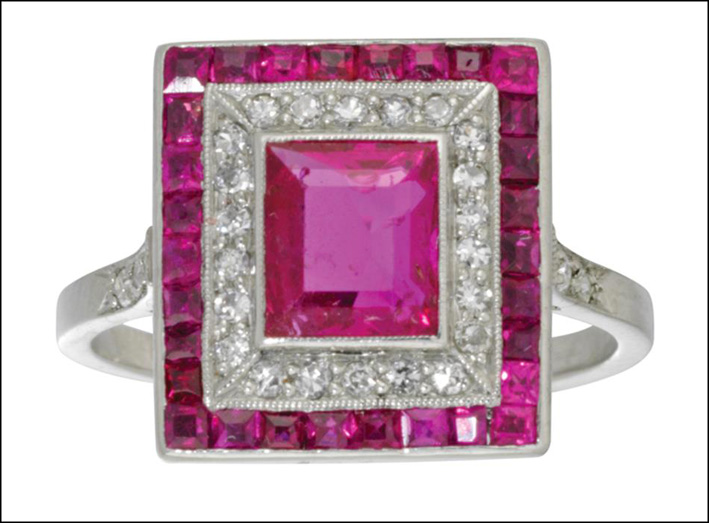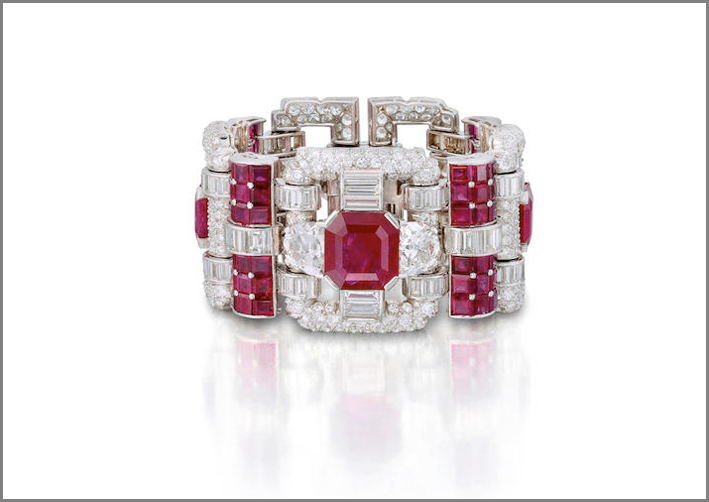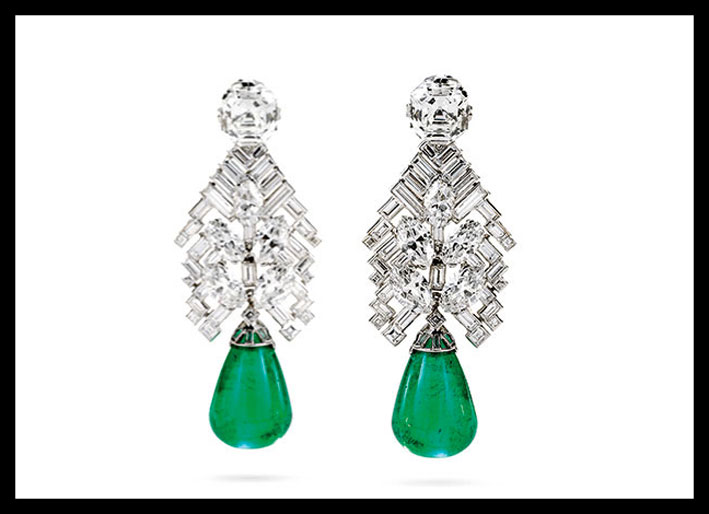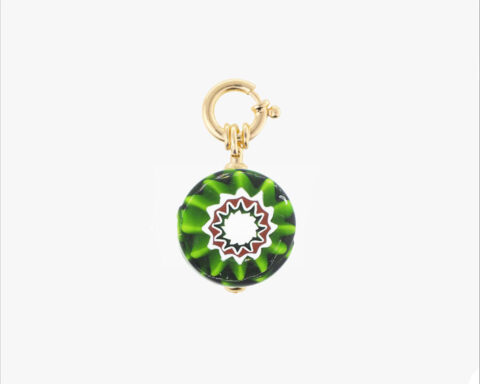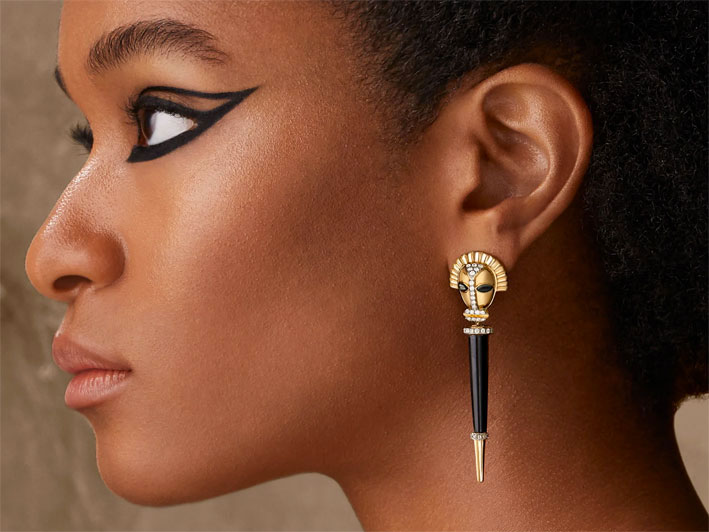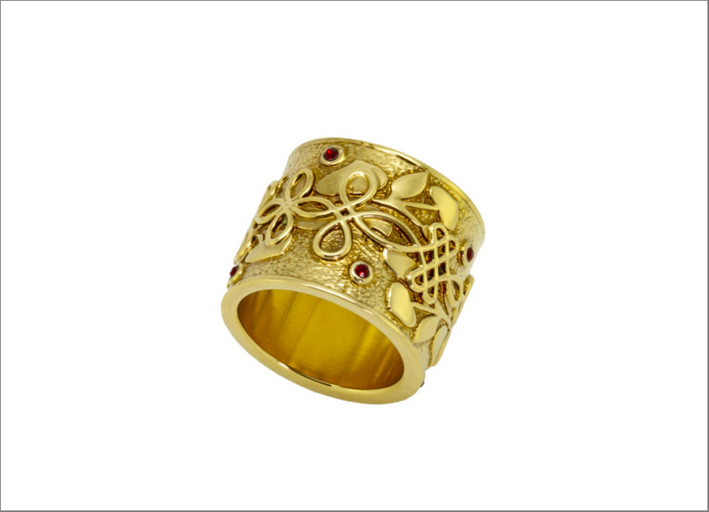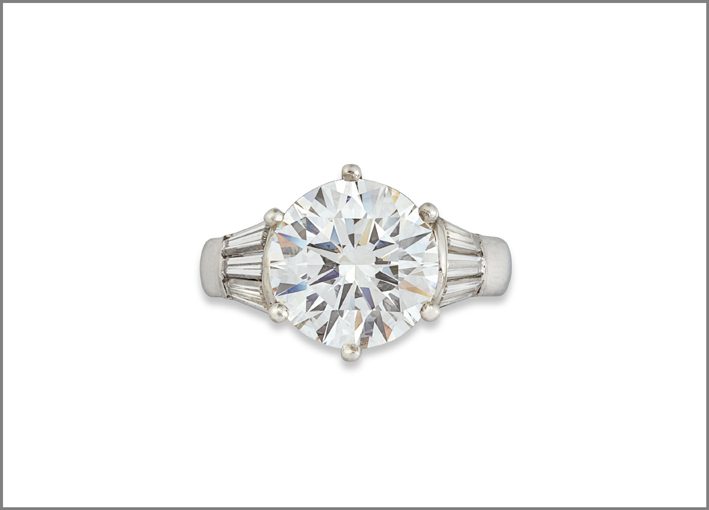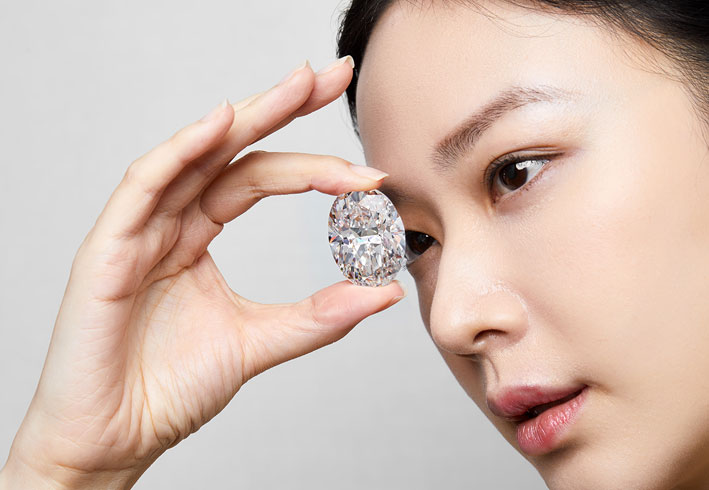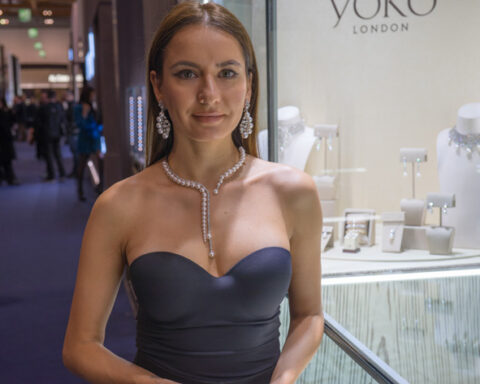Art Deco style jewels were the protagonists of the 1920s and 1930s, but have been rediscovered by the great Maison. Can you recognize an Art Deco ring or necklace? Here is a quick guide to the Roaring Twenties ♦ jewelry
Jewelry that was fashionable a century ago is still in fashion today. Jewelry at that time was sparkling, decadent and at the same time poignant. The geometric designs, the accent on clear shapes, often flat colors, with an architectural and classic style at the same time, have made Art Déco jewels timeless pieces. And not only do they like the original ones, made in those years by the great Maison, but that style is continually a source of inspiration for contemporary designers.

Mix of shapes
Like a sparkling cocktail, the jewels of the twenties were an intoxicating mixture of inspirations and influences. A bridge between the stylization of the Ballets Russes that excited Paris and the emotion of the Jazz Age: speed, race, the rhythm of the machine, Cubism, African art, oriental exoticism. These influences have also reverberated on the creations of luxury and design. A style that ended up going down in history as Art Deco, after 1925 Paris ExpositionInternationale des Arts Décoratifs et Industriels Modernes. The role of Cartier This style has a slow evolution. He had also been training for the work of Cartier, who around 1910 began to have a greater stylization of the floral motifs, with compositions composed of small carved gems. Like the series known as Tutti-frutti, a riot of emeralds, pearls, rubies and sapphires. Now these jewels are among the most sought after, thanks to the most typical features of Cartier’s Art Deco pieces. Perhaps not everyone knows, among other things, that the idea of this design was influenced by Indian jewelry, thanks to Cartier’s relations with a maharajah who arrived in Paris to make the traditional jewels of his country, but revisited in a modern style. The combination of blue and green, based on traditional Indian enamel work, and techniques such as jewelry-sculpture, played a vital role in the development of Cartier’s Art Deco jewelry.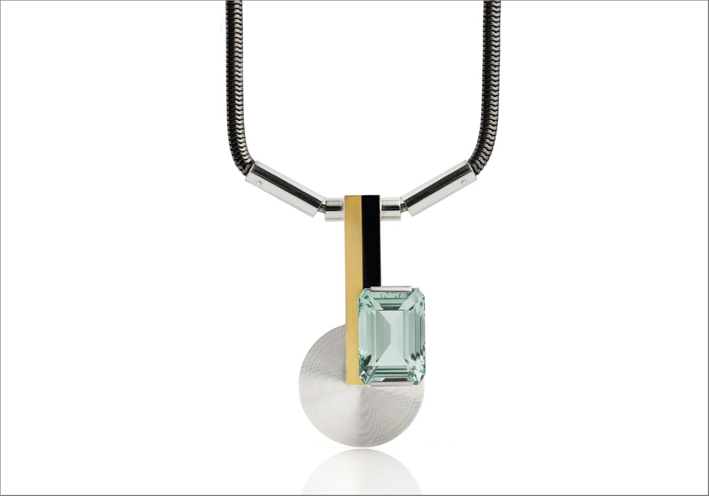
Even today this style like it
An All-Fruit bracelet from Cartier was sold for $ 1.4 million from Sotheby. But the most famous example of the style is the Collier Hindou, created by Cartier in 1936 for Daisy Fellowes, heiress of the Singer sewing machine company and obsessive jewelry collector. In Van Cleef & Arpels the same Daisy Fellowes in 1926 and 1928 commissioned a pair of Indian-inspired bracelets (or anklets): they were conceived as a deep band of diamonds arranged in a geometric pattern, reminiscent of a Persian rug, with a luxuriant fringe of emerald drops.
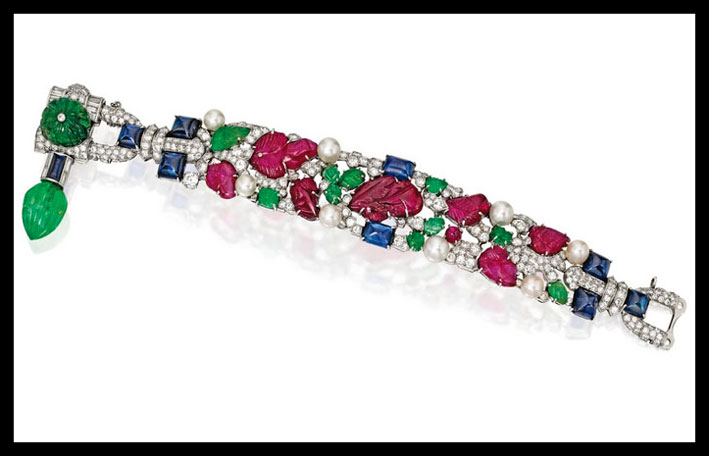
New cuts and exoticism
In this period the stones were often cut into small squares or oblong rectangles, combined with an elegant design, with moldings, roundings or cabochons. As in the famous bracelets with an Egyptian style frieze by Arpels, in which the scenes are drawn with impeccable cut colored gems. Even Cartier was not immune to the Egyptian vein, which was part of the climate of exoticism that has expanded to the Persian, Chinese and Japanese designs, which began in the early twentieth century. In some cases the Cartier jewels have even used, incorporating them, fragments of antiquities from the past, such as Egyptian scarabs or amulets. From this exoticism also come the bold combinations of colors, which are a surprising feature of Art Deco jewelry: the mix of blue and green, sapphires with emeralds, turquoise with lapis, the contrast of coral and onyx, or coral with emeralds, diamonds and onyx.
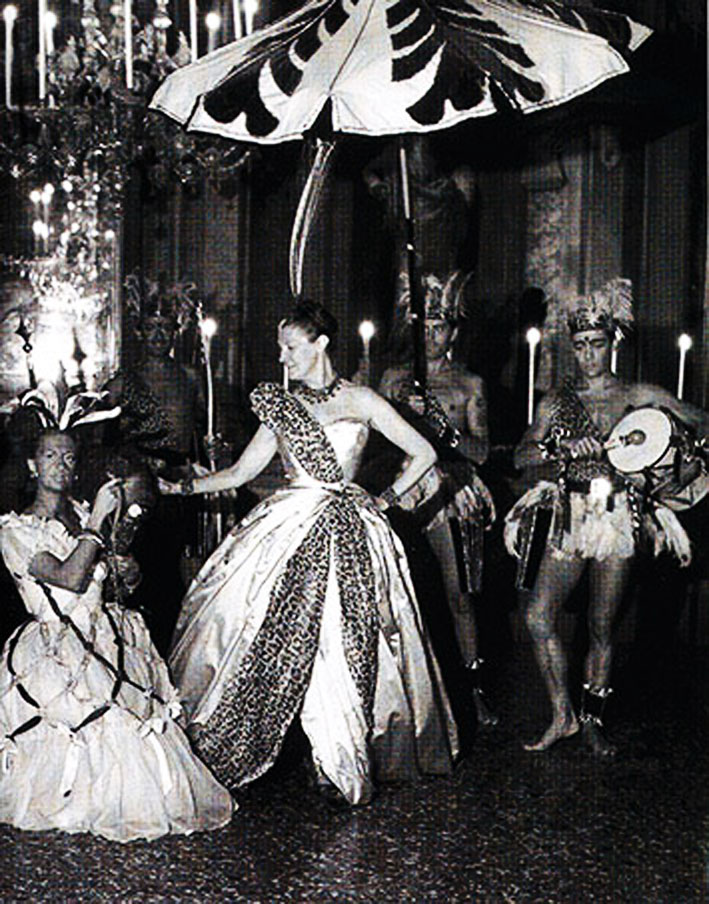
Live the monochrome
In the mid-1920s a change of pace, an alternative mood, with monochromatic colors and black and white compositions, arrived instead. In 1925 Tiffany proposed a ring with an onyx surface, in black segments, and diamonds. A scheme that was favored by the great talent of the designer Suzanne Belperron, in her work with Bernard Herz. The Belperron synthesized in a certain sense the new woman of the years between 1920 and 1930. Her jewels, like all the most beautiful Art Deco pieces, were beyond the fashion of the moment, which had adopted appropriate shapes to the new silhouette feminine, that is, less designed clothes for the “curve to them” of the Edwardian woman. In those years the clothes are instead proposed with a streamlined line, with a cylindrical, tubular, short, sleeveless shape. Maybe with fringes, beads or sequins for the dance, while the hairstyles go to the garçonne, with the short haircut, which brings out long earrings.
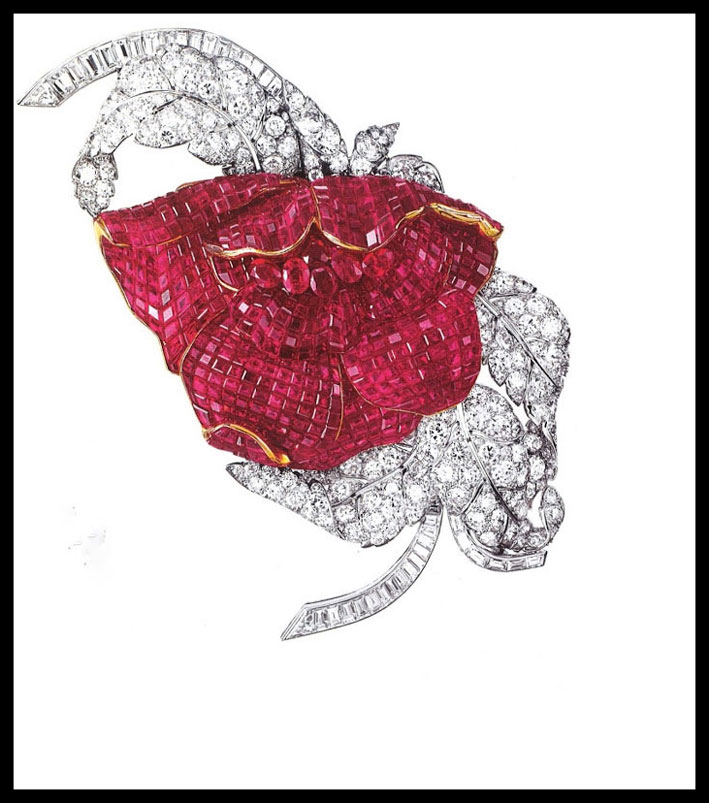
Change the horizon
The design of the twentieth-thirties jewel was generally vertical. The pins had long pins, the jabot or double-headed cliquet, worn perhaps in a corner of the unusual dress, on the belt, on the cloche hats, near the neckline. And the necklaces were generally sautoir, that is, long and loose strands of beads, often with a sensual bow at the end. For the great heiresses and worldly like Daisy Fellowes, Mrs. Harrison Williams or Barbara Hutton, these fabulously modern and daring jewels were part of their personality. Yet, those who were then daring designs, have become classics. Giulia Netrese

